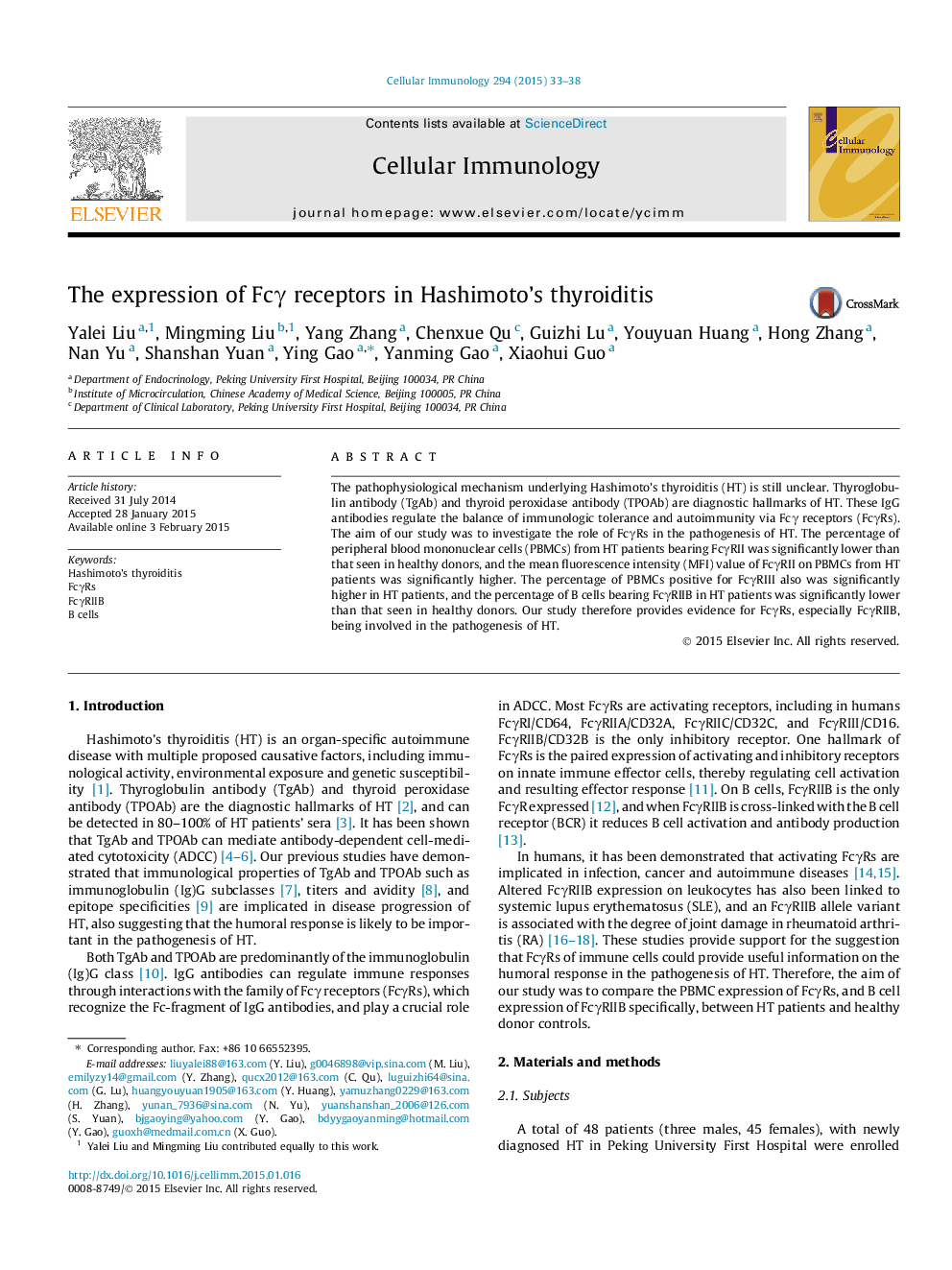| Article ID | Journal | Published Year | Pages | File Type |
|---|---|---|---|---|
| 2166956 | Cellular Immunology | 2015 | 6 Pages |
•The percentage of PBMCs positive for FcγRIII, not FcγRI, was higher in HT patients.•HT patients have lower expression of FcγRIIB, through Ab-independent mechanisms.•FcγRs, especially FcγRIIB, may be implicated in the pathogenesis of HT.
The pathophysiological mechanism underlying Hashimoto’s thyroiditis (HT) is still unclear. Thyroglobulin antibody (TgAb) and thyroid peroxidase antibody (TPOAb) are diagnostic hallmarks of HT. These IgG antibodies regulate the balance of immunologic tolerance and autoimmunity via Fcγ receptors (FcγRs). The aim of our study was to investigate the role of FcγRs in the pathogenesis of HT. The percentage of peripheral blood mononuclear cells (PBMCs) from HT patients bearing FcγRII was significantly lower than that seen in healthy donors, and the mean fluorescence intensity (MFI) value of FcγRII on PBMCs from HT patients was significantly higher. The percentage of PBMCs positive for FcγRIII also was significantly higher in HT patients, and the percentage of B cells bearing FcγRIIB in HT patients was significantly lower than that seen in healthy donors. Our study therefore provides evidence for FcγRs, especially FcγRIIB, being involved in the pathogenesis of HT.
